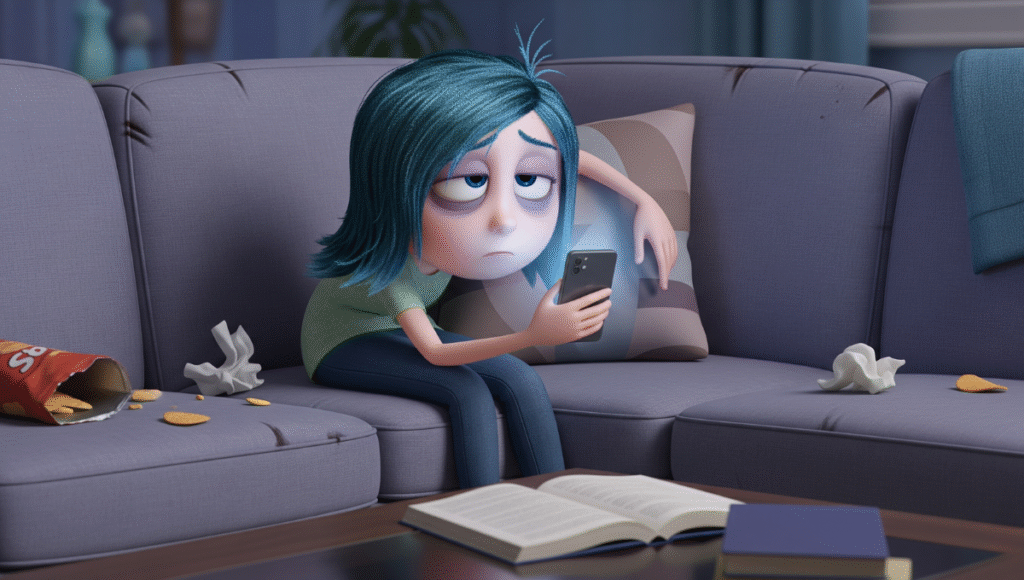Pixar’s Inside Out 2 isn’t just a charming sequel that dives deeper into the emotional complexity of adolescence — it’s a surprisingly sharp commentary on one of today’s most pervasive issues: screen addiction. The introduction of a new emotion, Ennui, provides a clever and culturally relevant lens to examine our relationship with digital devices, particularly how they influence attention, mood, and emotional development.
Meet Ennui: The Face of Emotional Numbness
Ennui, portrayed as a disinterested and detached character with a French accent, may not be as loud or dramatic as Joy or Anger — but her presence is powerful. She represents boredom, apathy, and emotional disengagement, often manifesting in Riley’s life during moments of scrolling through her phone or zoning out from real-life interactions.
This character may seem like a minor addition, but for many viewers, especially adults and teenagers, Ennui hits uncomfortably close to home.
The Scroll Culture: Where Emotions Go to Sleep
In the age of smartphones, we’re constantly stimulated but rarely present. Inside Out 2 captures this paradox beautifully. Rather than showing Riley overwhelmed by chaos, we see her dulled by monotony — endlessly scrolling, half-listening, and emotionally disengaged. Ennui is not evil or malicious; she simply reflects a very real consequence of our hyperconnected world: emotional stagnation.
This portrayal begs the question: Are we bored because there’s nothing to do, or are we bored because we’re always doing something — just not something meaningful?
A Mirror to Modern Teenhood (and Adulthood)
What’s most striking is how Ennui’s influence isn’t depicted as a villain to be defeated, but as a reality to be recognized. It shows how emotional development is subtly hijacked when we replace authentic experience with digital distraction. Riley’s growing dependence on her phone doesn’t result in catastrophe — it results in detachment, disconnection, and disinterest. It’s not explosive. It’s quiet, slow, and invisible.
That’s what makes it dangerous.
What Inside Out 2 Gets Right About Digital Distraction
-
It normalizes feeling bored. The movie reminds us that boredom isn’t a flaw; it’s a feature of the human brain. It often signals a need for creativity, rest, or reflection — not more stimulation.
-
It avoids blaming technology outright. Instead of demonizing screens, the film gently nudges us to look inward and ask why we’re turning to them so often.
-
It highlights emotional diversity. By including new emotions like Ennui, the film acknowledges that growing up today includes navigating not just the classics like Fear or Sadness, but also more modern mental states shaped by tech-heavy environments.
The Takeaway: Wake Up Before You Numb Out
Inside Out 2 doesn’t preach, but it does provoke. It asks viewers — especially younger ones — to consider what happens when we lean too heavily on screens to escape discomfort. When Ennui takes the wheel, we stop truly feeling. And in the long run, emotional numbing can be more harmful than sadness or fear.
As adults, it challenges us to reflect on our own habits. How often are we mentally “checked out”? How often do we choose digital distraction over presence? And what is that teaching the next generation?
Final Thoughts
By turning an abstract concept like emotional boredom into a fully realized character, Inside Out 2 does something remarkable: it humanizes the silent crisis of screen addiction. It’s a gentle but firm reminder that just because we’re constantly connected doesn’t mean we’re emotionally engaged.

